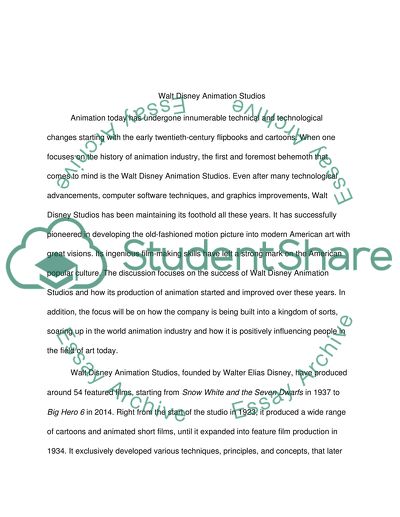Cite this document
(“Walt Disney Animation Studios Essay Example | Topics and Well Written Essays - 1750 words”, n.d.)
Retrieved from https://studentshare.org/visual-arts-film-studies/1672715-walt-disney-animation-studios
Retrieved from https://studentshare.org/visual-arts-film-studies/1672715-walt-disney-animation-studios
(Walt Disney Animation Studios Essay Example | Topics and Well Written Essays - 1750 Words)
https://studentshare.org/visual-arts-film-studies/1672715-walt-disney-animation-studios.
https://studentshare.org/visual-arts-film-studies/1672715-walt-disney-animation-studios.
“Walt Disney Animation Studios Essay Example | Topics and Well Written Essays - 1750 Words”, n.d. https://studentshare.org/visual-arts-film-studies/1672715-walt-disney-animation-studios.


